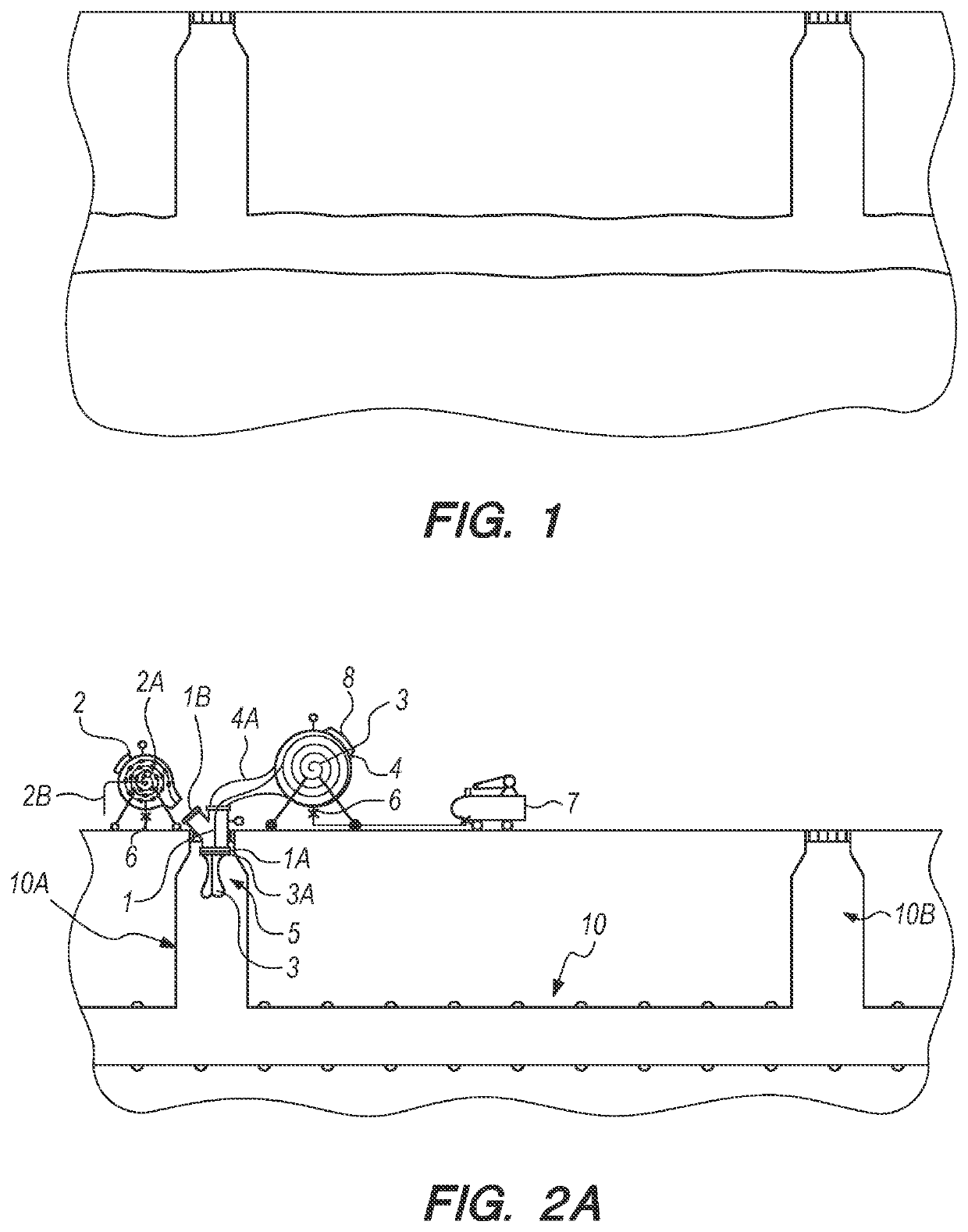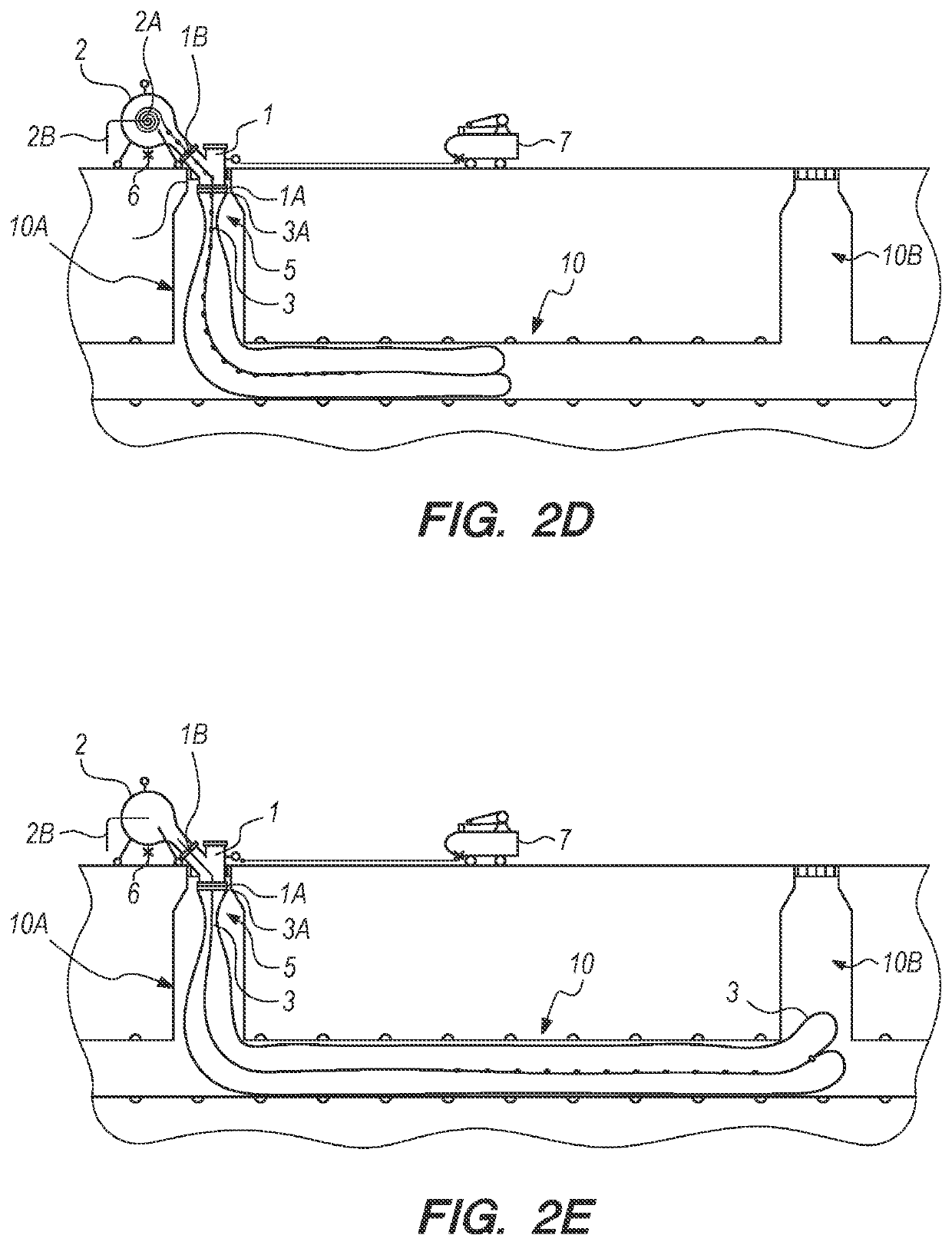Method, apparatus and system for lining conduits
a technology of conduits and equipment, applied in mechanical equipment, pipe elements, pipe/joints/fittings, etc., can solve the problems of unreliable shelf life, high cost, time-consuming operation, etc., and achieve the effect of minimizing all known risks and costs and less risks
- Summary
- Abstract
- Description
- Claims
- Application Information
AI Technical Summary
Benefits of technology
Problems solved by technology
Method used
Image
Examples
examples
[0094]The following examples describe specific methods within the scope of the present invention for lining or rehabilitating a pipeline or portion thereof. Each of the methods used a lining apparatus with variations and portions of the scope of the present invention. In each Example, prior to lining, the pipeline was temporarily removed from service and plugged or capped or (i.e., bypassed) by plugging the pipeline one section upstream of the work area and pumping all flows overland to one section downstream of the work area. The pipe to be lined was cleaned prior to installation of the liner.
example i
[0095]The most recent example and use of the apparatus and method of the invention occurred at a private residence in Phoenix Ariz. where the climatic conditions precluded the use of a thermal cure process. The contractor a large private plumbing company had entered into a contract to repair approximately 24 feet of old 3 inch cast iron sewer pipe that had failed in several locations along the bottom of the pipe, allowing for raw sewer to flow underneath the house foundations and when the flows backed up other services had to be called in to clean the inside of the home in question. The contractor had chosen a spray type of process initially to fix the problems encountered however during the descaling and additional prep-work needed to help restore the old cast iron pipe, further damage ensued causing more holes to form only this time their positions were closer to the top of the pipe or at the 12 o'clock position.
[0096]To solve this problem, three separate partial tubular liners we...
example ii
[0097]Another example of the method and a part of the device of the invention occurred at a location underneath a major highway within San Diego County. This involved a major problem associated with a small, 10 inch diameter storm drain of approximately 120 feet in length that ran under a very busy intersection. The traffic diversionary problems encountered with this location and multiple lanes with heavy traffic flows required an alternative pipe rehabilitation method, as this had to be completed on site and as fast as possible and in high elevated temperatures. This highlighted the known issues in the present state of the art in this field of technology, including problems such as the methods and procedures for such an operation cannot occur all at the same time, the pipe needed extensive cleaning which could take several hours in order to prepare the pipe for a repair, the actual reason for the repair or the cause could not be clarified since the inspection cameras could not get ...
PUM
| Property | Measurement | Unit |
|---|---|---|
| pressure | aaaaa | aaaaa |
| depth | aaaaa | aaaaa |
| depth | aaaaa | aaaaa |
Abstract
Description
Claims
Application Information
 Login to View More
Login to View More - R&D
- Intellectual Property
- Life Sciences
- Materials
- Tech Scout
- Unparalleled Data Quality
- Higher Quality Content
- 60% Fewer Hallucinations
Browse by: Latest US Patents, China's latest patents, Technical Efficacy Thesaurus, Application Domain, Technology Topic, Popular Technical Reports.
© 2025 PatSnap. All rights reserved.Legal|Privacy policy|Modern Slavery Act Transparency Statement|Sitemap|About US| Contact US: help@patsnap.com



